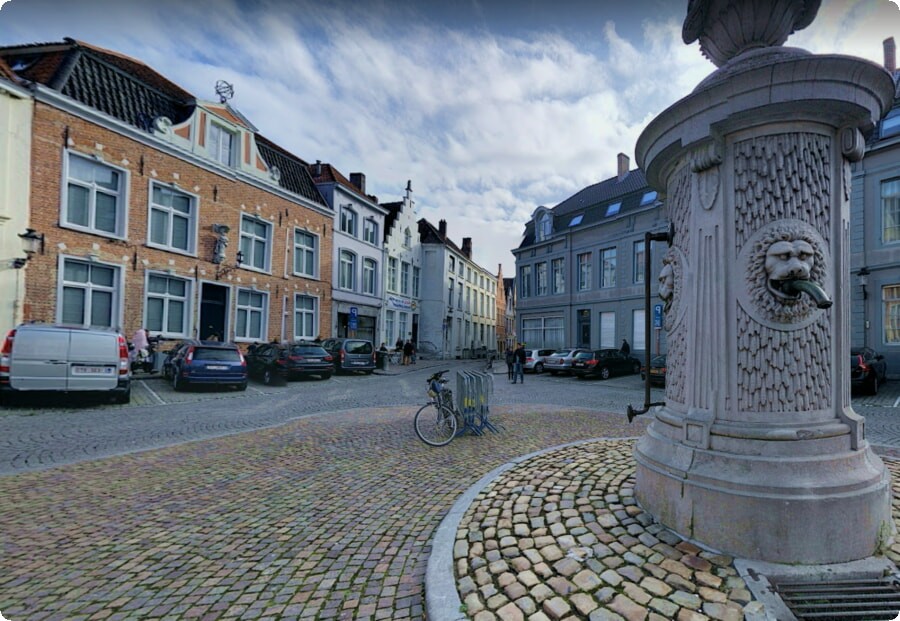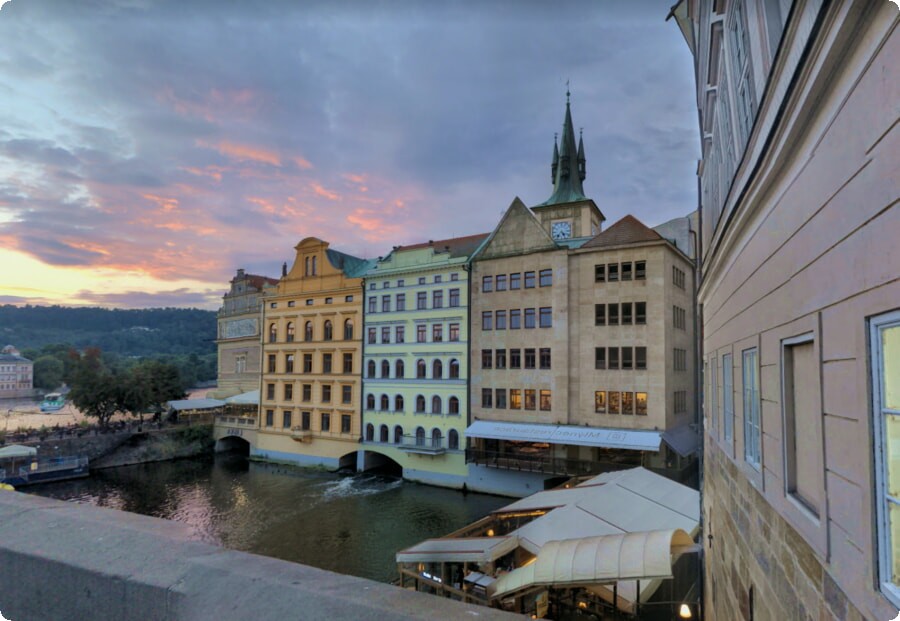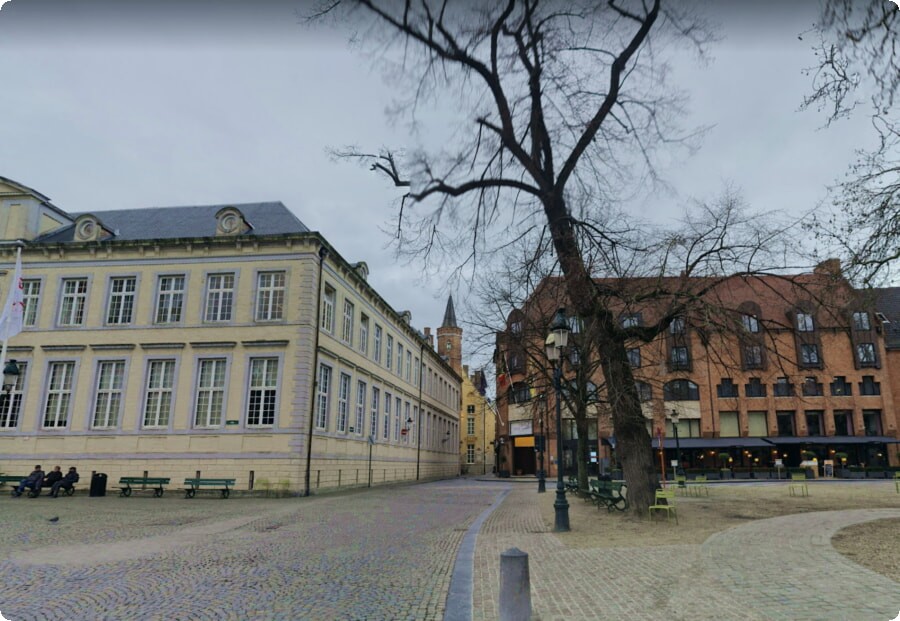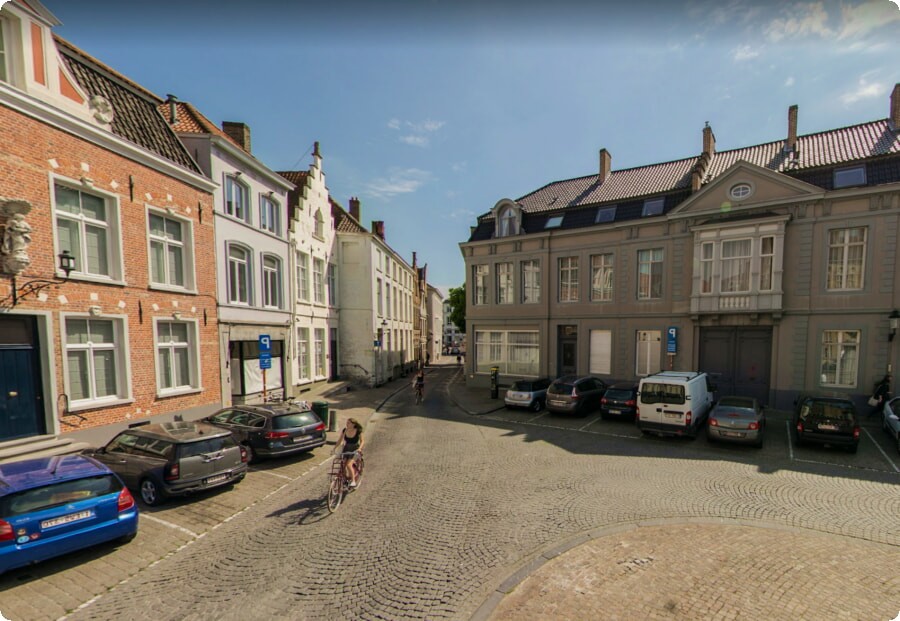Notable Places Around Bruges
Bruges is an enchanting medieval city that's full of history and charm. From quaint canals to cathedrals and modern shopping spots, there's plenty of sights to see here.
Take a trip on the waterways to soak up this beautiful city's history. You can book a guided tour to learn about Bruges' many best-kept secrets.
Rozenhoedkaai (Quay Of The Rosary)
The Quay Of The Rosary is a must see if you’re in the mood for a good old fashion stroll through the medieval streets of Bruges. This photogenic artery is lined with the most classic medieval buildings and canals you’ll find in the Belgian capital. The red-roof manors, towering spires and a cozy lake create the backdrop for a spiff worthy selfie or two. Its quaint surroundings have long enticed visitors to take the time to enjoy the local fare.
A slew of top notch restaurants and bars line the waterways, making it the perfect nip and tuck spot to while away the hours over a well rounded cocktail or two. It is an ideal location for a first timer to the city, allowing you to get the best of both worlds without having to worry about getting lost.
Tourists usually book a hotel in Norway in advance online, compare prices, ratings and reviews. For example, in Oslo you can book Lysebu from 152 euros per night.
Bonifacius Bridge
Bruges has become known around the world for its impressive historical buildings and architecture. The city’s most iconic buildings are located around the Markt (Market Square), which has served as a market since 958 and is now a popular meeting place. The Markt is also home to many restaurants and shops, and most city tours begin here.
Another one of Bruges’ most iconic landmarks is the medieval Belfry Tower & Cloth Hall, which is a must-see for anyone visiting the city. It’s also home to the stunning Historium Bruges, which lets you go back in time and learn about medieval Bruges from a whole new perspective.
If you’re into art, head to the Groeninge Museum, which houses one of the best collections of Flemish primitives, including Jan van Eyck’s 'Madonna with Canon Joris Van der Paele' and Hans Memling’s 'Moreel Triptych'. Alternatively, check out the National Gallery of Belgium in Brussels, which features works by Dutch and French artists.

The city’s charming Lake of Love park is a tranquil oasis that’s often overlooked by tourists. Tucked away between the green Ramparts and the hushed Beguinage, it’s the perfect spot for a romantic stroll.
A canal boat tour is another great way to get an overview of the historic centre of Bruges and see some of its most picturesque sights. The boats depart from a number of spots throughout the city and are usually led by a driver/guide who will provide live commentary in several languages. These are a great option if you want to visit a few different parts of the city without walking, but can be expensive if you don’t pre-book in advance.
You can also choose to do a horse-drawn carriage ride around the city centre, but these are often very busy and you won’t see as much as on a rickshaw tour. Alternatively, there are a number of highly-rated and affordable rickshaw tours that take you to various lesser-known parts of the city centre.
A Bruges beguinage is also worth a visit, especially during the spring when thousands of white daffodils bloom in the garden. It’s free to enter and a short walk from the centre of town, but be sure to arrive early as this is a popular spot for tourists!

Church of Our Lady
Bruges is known for its many stunning buildings, and the Church of Our Lady stands out as one of the most impressive. The brick tower that sits high above the city’s skyline, at 122 metres, is a major attraction and one of Bruges’ most popular landmarks.
Originally built in the 13th century, the church is made of red bricks and boasts a wealth of historical artwork. Michelangelo’s 'Madonna and Child' sculpture, for example, is one of the highlights of the interior.
A few other pieces of art are also on display, including a triptych by Margaret of Austria’s court painter Bernard van Orley and the 15th-century ceremonial tombs of Charles the Bold and his daughter Duchess Mary. You can also see a lot of Gothic architecture in this church, and there are several tombs inside that have interesting stories behind them.
Another highlight of this church is its gilded bronze effigies that are displayed in some of the tombs. They feature the names of many important people from Bruges’ past, including Philip the Fair and Mary Lovel.
There’s also a marble sculpture of a Madonna and Child by Michelangelo that was bought by Belgian merchants and shipped to Bruges in the 1500s. This piece was intended for Siena Cathedral in Italy, but was donated to the Church of Our Lady in 1514.

The church is a great place to start your tour of Bruges, as it’s free to enter and has some amazing artwork. However, if you want to see the artwork in the museum area, you’ll have to pay a small fee.
After that, you’ll be able to view some of the most impressive artworks in Bruges. Michelangelo’s 'Madonna' and 'Child' are a must-see, and the chancel also features a triptych by the painter Bernard van Orley. Other paintings include Pieter Poubus’ 'Last Supper' and 'Adoration of the Shepards', as well as Gerard David’s 'Transfigeration'.
Aside from these works, you can also find the tombs of Bruges’ most important people, and the Church of Our Lady is one of the best places to learn about this city’s rich history. You can even take a guided tour, where you’ll get to learn more about Bruges’ past while exploring the church and its museum.
Burg Square
One of the most prominent landmarks in Bruges, Burg Square is home to a whole bunch of historic buildings that showcase some of the city’s most impressive gothic architecture. It’s a pretty spot and a must-visit for anyone visiting the town.
Its medieval centrepiece is the Gothic style Stadhuis, or Town Hall, that was built in 1376 and is one of the oldest preserved in Flanders. The Gothic hall is a great place to learn about Bruges’ history and the city’s political struggle in the centuries since it was founded.
The building also contains a museum where you can see historical artifacts from the area. The walls are filled with murals that depict important people and events in Bruges’ history.
There’s a lot to see in the square so plan to spend at least half an hour taking it all in. It’s a lively tourist attraction and one of the best places to grab a bite to eat in Bruges as well.

Another reason to drop by this historic square is the Procession of the Holy Blood that takes place on Ascension Day (40 days after Easter). It’s a UNESCO World Heritage-listed event, so be sure to check out the sights and get there early.
A couple of other places to stop at while you’re here include the Old Civil Registry, the Basilica of Holy Blood and the Bruges City Hall. These buildings are all worth a look, but I’d recommend spending the most time in the Town Hall as it really is a must-see for anyone visiting Bruges.
If you’re looking for something a little more relaxed, then you can’t go wrong with a walk around Minnewater Lake. It’s a stunning green space that’s perched right in the heart of Bruges, so you can take a relaxing walk or a brisk stroll to admire its beautiful architecture.
Lastly, don’t miss the Belfry of Bruges, a totally impressive medieval tower that’s one of the most iconic sights in the city. It’s an easy walk to the top and you can climb it to take in Bruges’ spectacular views.